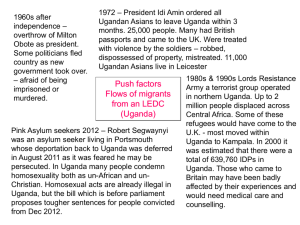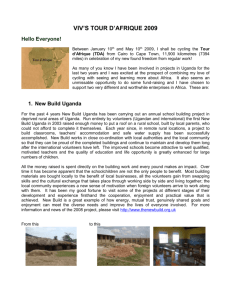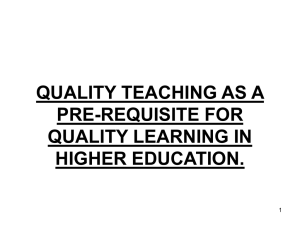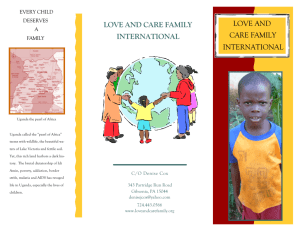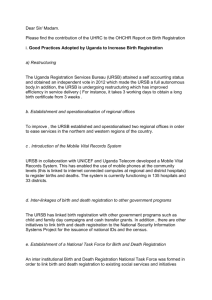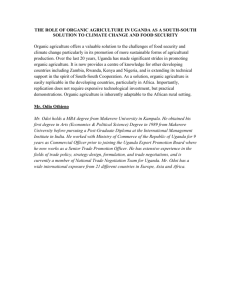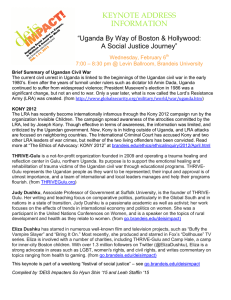Selected experience: Uganda Red Cross Society
advertisement
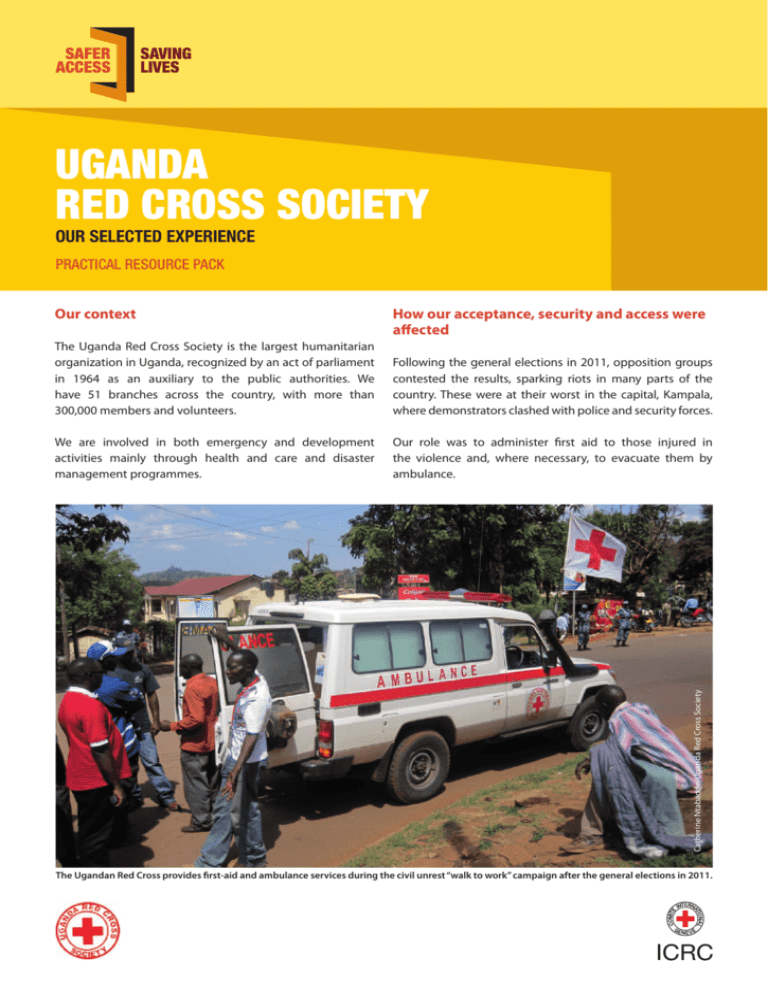
UGANDA RED CROSS SOCIETY SAFER ACCESS SAVING LIVES UGANDA RED CROSS SOCIETY OUR SELECTED EXPERIENCE PRACTICAL RESOURCE PACK Our context How our acceptance, security and access were affected Following the general elections in 2011, opposition groups contested the results, sparking riots in many parts of the country. These were at their worst in the capital, Kampala, where demonstrators clashed with police and security forces. We are involved in both emergency and development activities mainly through health and care and disaster management programmes. Our role was to administer first aid to those injured in the violence and, where necessary, to evacuate them by ambulance. Catherine Ntabadde/Uganda Red Cross Society The Uganda Red Cross Society is the largest humanitarian organization in Uganda, recognized by an act of parliament in 1964 as an auxiliary to the public authorities. We have 51 branches across the country, with more than 300,000 members and volunteers. The Ugandan Red Cross provides first-aid and ambulance services during the civil unrest “walk to work” campaign after the general elections in 2011. During the events, one of the Ugandan Red Cross ambulances was stoned by the rioters in the mistaken belief that it was a government vehicle. Normally, the National Society uses a certain type of vehicle for its ambulances and transportation but the ambulance in question was similar to the ones used by government hospitals. What we did and learned To address the immediate problem, the Ugandan Red Cross rapidly demobilized the non-standard ambulances and stepped up awareness-raising methods (operational communication), including using radio and television to reach as wide a population as possible, particularly those involved in the clashes. The following Safer Access Framework elements were particularly relevant to our situation: Identification We learned that it is important to ensure that vehicles, personnel and equipment used in such situations are clearly identified and identifiable by the population as belonging to the Red Cross and associated with its humanitarian work. We also learned that our staff and volunteers need to be clearly and commonly identified. As a result, they now all wear jackets that bear our logo on the front and back. The jackets are serialized so that it is clear which jacket belongs to which person and which branch they are working with. External communication/Acceptance of the organization that reaches the entire population, using mass media to spread greater awareness of the National Society’s mandate and role and awareness of its unique use of the logo and emblem. In situations of this kind, where it is hard to single out specific people or groups to engage with, it is important to adopt a broad operational communication or dissemination strategy Since taking those measures, we have been able to work without further incident, with increased acceptance and greater access to those in need. “ Identification is one of the key elements of the Safer Access Framework and enables the National Society’s staff, volunteers and assets, such as vehicles, to be clearly distinguishable from those of other actors. Coupled with other factors, particularly the association of the Red Cross and Red Crescent brand with the provision of humanitarian services, this enables us to gain greater access to the beneficiaries we serve. ” Dr Bildard Baguma, Under Secretary General, Programmes and Projects, Uganda Red Cross Society




